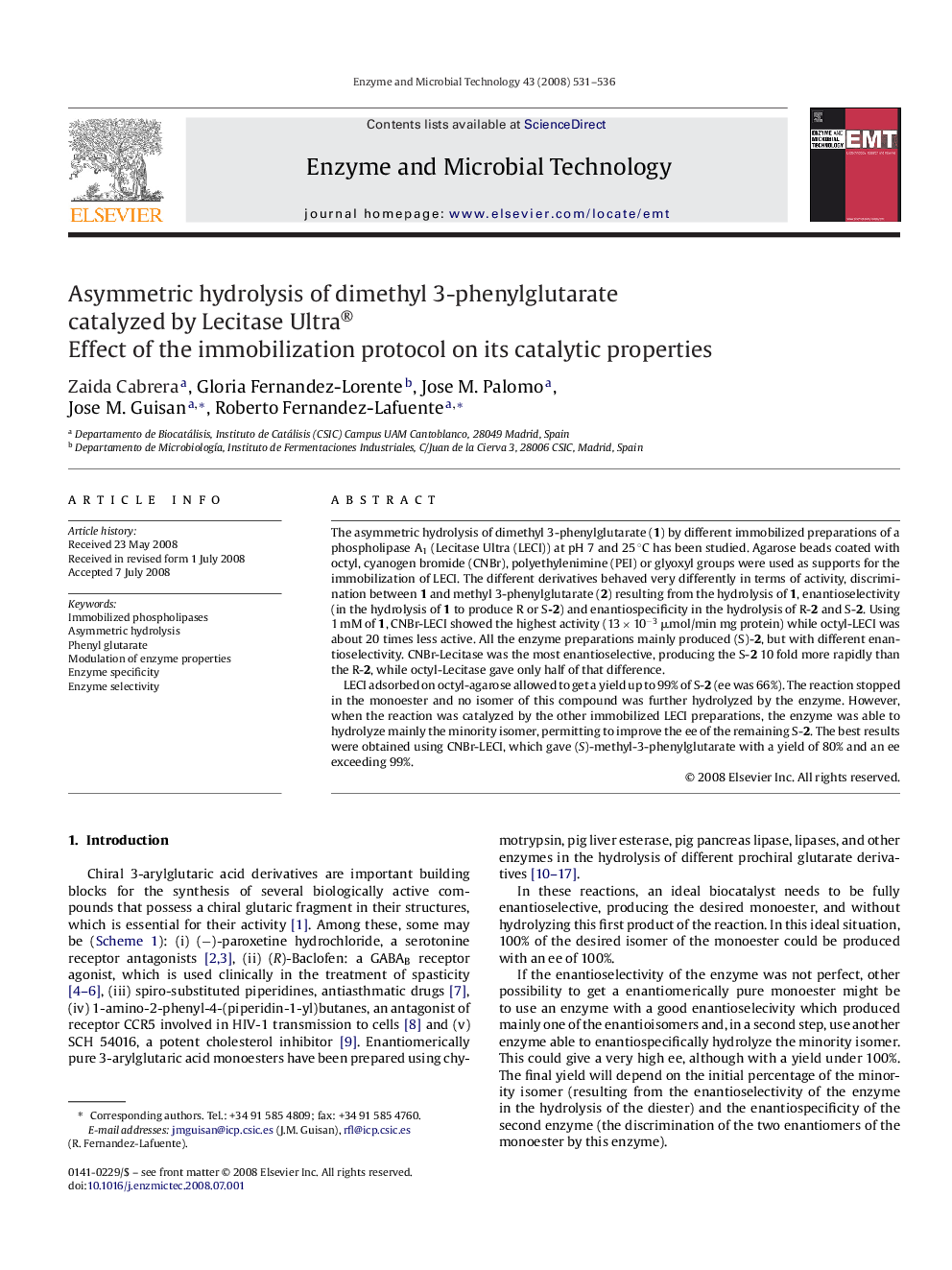| Article ID | Journal | Published Year | Pages | File Type |
|---|---|---|---|---|
| 17662 | Enzyme and Microbial Technology | 2008 | 6 Pages |
The asymmetric hydrolysis of dimethyl 3-phenylglutarate (1) by different immobilized preparations of a phospholipase A1 (Lecitase Ultra (LECI)) at pH 7 and 25 °C has been studied. Agarose beads coated with octyl, cyanogen bromide (CNBr), polyethylenimine (PEI) or glyoxyl groups were used as supports for the immobilization of LECI. The different derivatives behaved very differently in terms of activity, discrimination between 1 and methyl 3-phenylglutarate (2) resulting from the hydrolysis of 1, enantioselectivity (in the hydrolysis of 1 to produce R or S-2) and enantiospecificity in the hydrolysis of R-2 and S-2. Using 1 mM of 1, CNBr-LECI showed the highest activity (13 × 10−3 μmol/min mg protein) while octyl-LECI was about 20 times less active. All the enzyme preparations mainly produced (S)-2, but with different enantioselectivity. CNBr-Lecitase was the most enantioselective, producing the S-2 10 fold more rapidly than the R-2, while octyl-Lecitase gave only half of that difference.LECI adsorbed on octyl-agarose allowed to get a yield up to 99% of S-2 (ee was 66%). The reaction stopped in the monoester and no isomer of this compound was further hydrolyzed by the enzyme. However, when the reaction was catalyzed by the other immobilized LECI preparations, the enzyme was able to hydrolyze mainly the minority isomer, permitting to improve the ee of the remaining S-2. The best results were obtained using CNBr-LECI, which gave (S)-methyl-3-phenylglutarate with a yield of 80% and an ee exceeding 99%.
